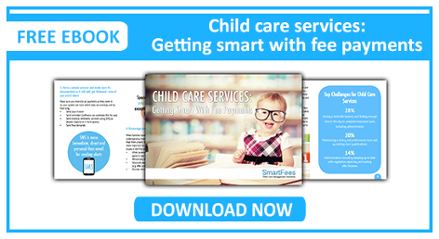Gowrie NSW has compiled a fantastic list of free fact sheets available to child care services to help improve their reach into their local community. Quality Area 6 of the National Quality Standard (NQS) focuses on collaborative partnerships with families and communities so it’s important that all child care services aim to truly connect with their community. By doing so child care services ensure:
- Respectful and supportive relationships are developed and maintained between them and their families
- Each family’s values and beliefs about raising their child are respected and supported
- Each child’s learning and well being is enhanced

There are five fact sheets in total focusing on:
- Conducting a community needs analysis
- Building a business model
- Linking up and reaching out
- Marketing tips and raising your centre profile
- Using social media in early education and care
Below we’ve pulled out excerpts from each fact sheet to give you some insight into what they offer.
1. Conducting a community needs analysis
Whether you operate an existing children’s service or intend opening a new service, the success of your business will depend on your ability to cater to the needs of families in your local area. To understand what those needs are, you will need to conduct a community needs analysis. The purpose of a community needs analysis is to gather information that will help you understand matters such as:
- Changes to the demographics of the local area
- Parent needs and preferences in relation to services for their children
- Gaps in meeting the government priority for children in the year before school to access 15 hours of preschool
- The feasibility of starting up a new service and what type of service this should be
- Preferences and needs of priority families including Aboriginal and Torres Strait Islander families
To learn more about how to conduct a community needs analysis click here.
2. Building a business model
Education and care centres are just like any other business. They need a plan for generating income that is well articulated and encompasses strategies for:
- Keeping the business sustainable and on track to achieve financial viability.
- Ensuring all stakeholders are working towards a common purpose and values.
- Ensuring the business is flexible enough to respond to changes in the social, economic and political environment.
- Connecting with priority families including aboriginal families and children in the year before school.
Click here to learn what steps you need to take in order to build a business model for your child care service.
3. Linking up and reaching out
It is important that centres take the time to understand the issues in their local area and to strengthen relationships with other organisations. Otherwise they may be working in isolation and at odds with the culture of their community thereby limiting their potential to meet the needs of local children and families. Linking up and reaching out to the community must be an ongoing part of every centre’s activities.
To get started on building and forming partnerships click here.
4. Marketing Tips and raising your centre profile
Successful education and care centres must attract new enrolments every year. In order to attract these enrolments families must know that your centre exists and they must trust you enough to want to enrol their children at your centre more than at any other centre. Marketing will help you to spread the word about the good things that your centre is doing and to build trust and confidence with the community.
However, marketing requires you to spend time developing a consistent approach. Every message you send out builds on previous messages and must reflect the same professional values. This is why your marketing strategy must be planned and well thought through.
Click here to learn what steps you need to take in order to develop a robust marketing plan as well as which marketing mediums you should be utilising.
5. Using social media in early education and care
Here are some very good reasons you should use social media:
- Gain brand recognition
- Grow loyalty to your centre
- Listen to what others are saying about you
- Connect with your community of families
- Connect with potential staff
- Counter any negative talk
- Become a leader in the sector
- Keep an eye on your competitors
Don’t think social media can’t affect your child care service – get involved and start communicating! For more valuable tips and learn all about making the most of social media click here.
All of these fact sheets offer valuable information that will help you connect with your community and enhance the experience for each and every child in your care. Even if you feel you’re already doing a fantastic job at this, I recommend you review the fact sheets as there could be something in there that you haven’t thought about doing yet.
If you’d like to be kept up-to-date on the latest trends and news in the child care sector as well as receive information on how to combat challenges child care services face on a daily basis, please subscribe to our blog SmartReads.
We also invite you to follow us on Twitter and Facebook for the latest child care sector news.




